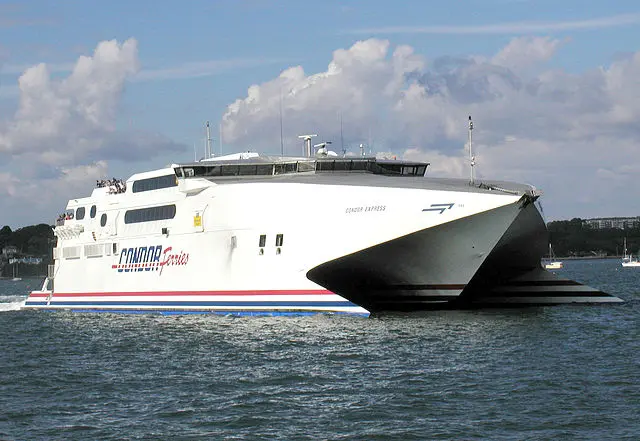England To France By Ferry – An Awesome Channel Crossing Experience

Crossing The Channel From The UK to France, a Thrilling Experience.
The English Channel, French La Manche or simply just the Channel, separates the southern part of England and the northern part of France and also links the southern area of the North Sea to the Atlantic Ocean. The Channel is believed to have been formed through a sudden outburst flood of a glacial lake in the ancient Doggerland area. The Channel has been of strategic importance in wars since the earliest days of sail. Naval battles in the channel have served as a strategic defense for Britain against invasion threats during the Napoleonic Wars, Spanish Armada and Nazi Germany during the Second World War. The Channel has also acted as a link by joining shared political structures and cultures in peaceful times.
The Channel being a well-known international waterway , does not have dangerous currents and channel crossing became the norm for paddle steamers, ferries, hovercrafts, water skis, sea scooters, hot air balloons, airplanes, and even swimmers. A Channel Tunnel that connects France and UK by rail was opened in 1994. Amazing tourist destinations along the Channel are; Mont Saint-Michel, the coastal resorts of Deauville and Brighton and of course, Channel Hopping.
Going to France by ferry can be quite an adventure but is often overlooked since flying and the Chunnel are faster options. Flying has its own delights no doubt, but the ever annoying delays on arrival, to airport car parks make it less than a fulfilling experience. Crossing the Channel by ferry however lets you watch the Isle of Wight fade into the haze, watch the waves made by the ferry as it moves, and best of all, you get to travel with your car, motorhome or caravan from one country to the other. Ferry crossing is a thrill that needs to be rediscovered. Gone are the days of boring ferries that were poorly maintained, serving tasteless food and hygiene wanting. Modern day ferries are clean, the food is delicious, you’ll find special offers and the overall experience is awe-inspiring. Most ferry fares are really flexible; rates change frequently depending on how well a sail sells along with the nearness to the date of departure.
So how do you find ferry rates and schedules for channel crossings? Ferries 2 France offers over 1000 ferry routes with more than ten routes to France and special offers for all its customers guarantees the ultimate ferry crossing experience. Their bookings are verified by a Visa or a MasterCard Secure Code Authentication.
Here is a guide to the crossing options that you can decide to choose on your ferry journey experience.
DOVER-CALAIS FERRIES
This is perhaps the most well-known Channel ferry crossing route and hence it has the most frequent crossings with up to 30 crossings daily at peak times. All its operators use standard roll-on, roll-off ferries with some restaurants, lounges, a bar, duty-free shop and several other amusements. Whichever operator you choose, the crossing takes the same time so you need to select the most convenient one to suit your needs.
DOVER-DUNKERQUE FERRIES
From Dover, Dunkerque is a lesser known destination but it is the cheapest way to get across the Channel because the Calais crossing is in higher demand. If you plan to travel through Belgium, Dunkerque will be the most convenient port. The crossing is mostly served by standard roll-on, roll-off ferries meaning that you will get shops and restaurants as well as other amusements.
NEWHAVEN-DIEPPE FERRIES
This is also a lesser-known ferry crossing but nevertheless a popular route to those on the south-east side travelling to western parts of France. There are two ferries here and the crossing usually takes about 4 hours. It is quite affordable compared to similar crossings from Portsmouth. It is served by roll-on, roll-off ferry and there are also cabins for those who would prefer a bit more privacy at an additional cost.
PORTSMOUTH-LE HAVRE FERRIES
There are a lot of different ways of crossing from Portsmouth to Le Havre but the cheapest takes 9 hours and it is an overnight crossing that allows passengers to get a full night’s sleep. There is also a slightly more costly crossing that runs at daytime during weekdays and it takes about 5 hours. They also provide roll-on, roll-off ferries with a cabin at an additional cost.
POOLE-CHERBOURG FERRIES
Cherbourg is the only French destination that you can choose from Poole. This crossing takes 4 hour, it is more expensive than travelling to Le Havre or Caen from Portsmouth because you get to enjoy a plush cruise ferry ride plus a cabin for an extra cost.
PLYMOUTH-ROSCOFF FERRIES
This route is common among residents of Wales and south-west England. It ranks as the second most expensive crossing for it is a cruise ferry and you get a reserved seat with your ticket along with private cabins with beds at an additional cost. At daytime, it takes 6 hours and it runs more slowly at night time taking 8 hours.
PLYMOUTH-ST MALO FERRIES
This provides a cheaper option when compared to Plymouth-Roscoff but only runs once each week. It is an overnight service operated by a cruise ferry and takes about 11 hours.
PORTSMOUTH-CAEN FERRIES
This route gets you closer to central and south east France even though it takes a little longer than the route to Le Havre for you spend 6 hours during the day, 7 hours during an overnight crossing. It is operated by a cruise ferry that is larger than a standard roll-on, roll-off ferry with a private cabin.
PORTSMOUTH-ST MALO FERRIES
The ferry here is the longest crossing for it takes 12 hours and is also the most expensive option operated by a luxurious and more spacious cruise ferry. It is an overnight crossing allowing you to get a full night’s sleep. It is the best crossing to choose if you are travelling to western France hence a favorite for people coming from northern England and Scotland after a long drive.






